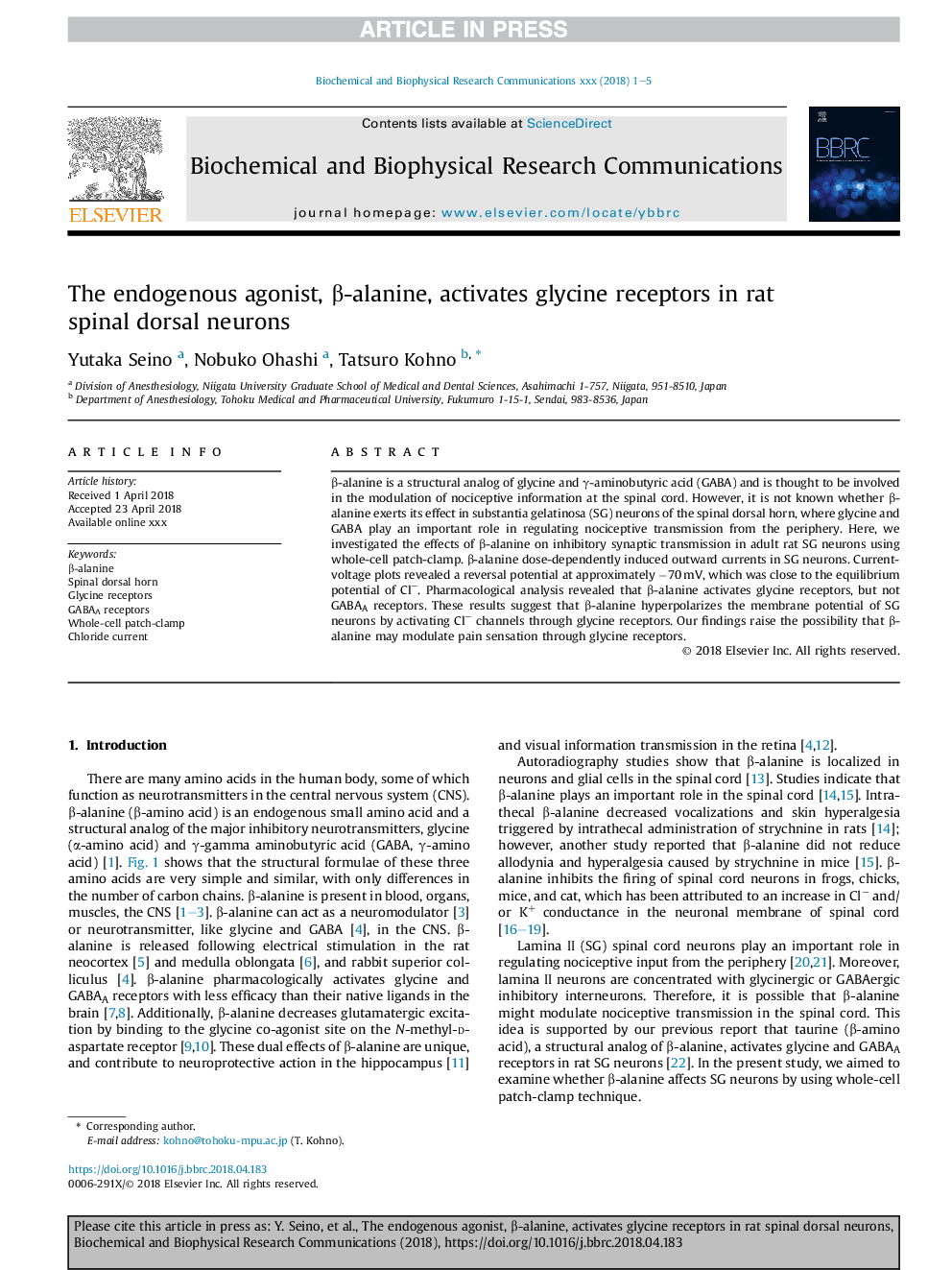| Article ID | Journal | Published Year | Pages | File Type |
|---|---|---|---|---|
| 8292637 | Biochemical and Biophysical Research Communications | 2018 | 5 Pages |
Abstract
β-alanine is a structural analog of glycine and γ-aminobutyric acid (GABA) and is thought to be involved in the modulation of nociceptive information at the spinal cord. However, it is not known whether β-alanine exerts its effect in substantia gelatinosa (SG) neurons of the spinal dorsal horn, where glycine and GABA play an important role in regulating nociceptive transmission from the periphery. Here, we investigated the effects of β-alanine on inhibitory synaptic transmission in adult rat SG neurons using whole-cell patch-clamp. β-alanine dose-dependently induced outward currents in SG neurons. Current-voltage plots revealed a reversal potential at approximately â70â¯mV, which was close to the equilibrium potential of Clâ. Pharmacological analysis revealed that β-alanine activates glycine receptors, but not GABAA receptors. These results suggest that β-alanine hyperpolarizes the membrane potential of SG neurons by activating Clâ channels through glycine receptors. Our findings raise the possibility that β-alanine may modulate pain sensation through glycine receptors.
Keywords
Related Topics
Life Sciences
Biochemistry, Genetics and Molecular Biology
Biochemistry
Authors
Yutaka Seino, Nobuko Ohashi, Tatsuro Kohno,
